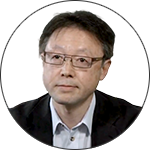Tokyo – Transforming its CBD from business district to vibrant hub
| Writer |
|---|
| Serene Tng |
The Otemachi-Marunouchi-Yurakucho (OMY) prime business district in Tokyo has transformed from a suit-and-tie environment into an attractive hub even during weekends. Dr Miki Yasui of the Japan Area Management Network and Hiroaki Fujii who led the OMY Area Management Association reflect on lessons learnt and how other areas in Japan are catching on.
 Workers and visitors enjoying the Marunouchi Naka-dori Avenue that runs through the centre of the OMY district. It has been closed for traffic from 2017 © OMY Area Management Association
Workers and visitors enjoying the Marunouchi Naka-dori Avenue that runs through the centre of the OMY district. It has been closed for traffic from 2017 © OMY Area Management Association
In the last 20 years, the Otemachi-Marunouchi-Yurakucho (OMY) district in Tokyo, a prime business area, has transformed from a suit-and-tie office environment into a vibrant and lively hub that attracts people even during the weekends. Behind the change is a strong public-private partnership based on a shared vision.
Place-making efforts for the area took off from 2002 with the formation of the OMY Area Management Association, led by developer and land owner Mitsubishi Estate Co. Ltd which owns one third of the OMY area. This was set up against a backdrop of urban renewal efforts for the district and with an already growing private sector involvement through other groups (for example, the Council for Area Development and Management and the Advisory Committee on the OMY Area Development) that have shaped planning principles and guidelines for the area.
As a result of both renewal and place-making efforts, the number of retail shops has increased from 280 in 2002 to 870 in 2017. More are also visiting the district. In the weekends, pedestrian figures have more than doubled from about 23,250 in 2002 to 57,276 in 2016.1
Dr Miki Yasui, Vice-Chair of the Japan Area Management Network and Hiroaki Fujii from Mitsubishi Estate leading the OMY Area Management Association reflect on lessons learnt and how other areas in Japan are also catching on.
“In many cities, there may be 60 or 70 percent of buildings that are more than 50 years old. We need to make cities younger again. One of the ways to do this is through rejuvenation.”
Vice-Chair, Japan Area Management Network
Why are cities focusing more on rejuvenation?
Dr Miki Yasui (MY): Many buildings were built around the 1940s to 1970s. It is not only in Tokyo but in other cities as well. In many cities, there may be 60 or 70 percent of buildings that are more than 50 years old. We need to make cities younger again. One of the ways to do this is through rejuvenation.
Beyond just renovating the older buildings, we can use existing resources. For example, a street can be converted into a plaza that people can relax in or socialise with friends. Vacant houses in local areas can be repurposed. This is happening everywhere in Japan. Schemes are being developed to enable entrepreneurs or residents to use old facilities or public spaces such as parks and streets for various activities. All these contribute to the rejuvenation of the city.
What are some shifts you have observed in recent renewal efforts?
MY: There is a lot more dialogue and interest in the importance of urban renewal efforts in contributing to the economy and society. More and more developers and property owners are also seeing the value in helping to make their surrounding areas more attractive, recognising that this also enhances their own individual developments.
The value of the building and the immediate area correlates with each other. Taking public contributions more seriously, we are seeing developers and companies keen to collaborate with workers or residents to ensure the long term viability and sustainability of areas.
 The Marunouchi area in the OMY district in the past and today, turning from an office environment into a lively, vibrant mixed-use area © Tokyo Metropolitan Government
The Marunouchi area in the OMY district in the past and today, turning from an office environment into a lively, vibrant mixed-use area © Tokyo Metropolitan Government
How has the OMY district evolved and what has contributed to the change?
Hiroaki Fujii (HF): The OMY district is located between the Tokyo Central Station and the Imperial Palace. It is at the very centre of Tokyo and Japan. Within a site area of 120 hectares, there are more than 100 buildings. 4,300 companies are located here with 280,000 workers2. It used to be an area that was mainly used for offices. But in the last 20 years, the area has changed to a more mixed-use district. Today, you can see lots of shops, cafés, restaurants, hotels, museums, fitness clubs — all kinds of facilities are available and many activities can be seen too.
What has contributed to these changes is a shared vision for the district developed together between the public and private sectors. The vision also considers both the hardware and software of the city. It is not just about making a plan for the redevelopment of buildings but the plan has to also include the operational aspects in terms of how to generate and sustain vibrancy in the area.
How do you sustain the vibrancy of the district?
HF: Frequency and variety of events and activities are important. Working around the four seasons we have in Japan, we plan special programmes for each season. We are mindful of planning activities around where people walk, to entice them to want to linger longer in the area as they move from one point to another.
We also look at the volume of retail required to attract people. When we redeveloped the Marunouchi building, we planned for a critical mass of retailers, but we also changed the use from a bank to cafés and restaurants along the street to create a livelier atmosphere.
 Lushly planted sidewalks, ample seating places and shops create a casual environment in the Marunouchi area © Urban Redevelopment Authority Singapore
Lushly planted sidewalks, ample seating places and shops create a casual environment in the Marunouchi area © Urban Redevelopment Authority Singapore
What is one unexpected thing you did in your place-making efforts?
HF: As part of our place-making efforts, we set up tables and chairs on the streets every day and organise many kinds of events mainly during the weekends. For us to even do these things meaningfully, we had to first look at the guidelines for utilising public spaces. We volunteered to draft the guidelines and this was eventually authorised by the government. It was a rewarding experience being able to contribute to shaping how public spaces can be used.
What contributes to successful place-making for an area?
MY: Place-making efforts should focus on building social capital in terms of creating strong relationships within place management associations and with stakeholders and residents. This is important if we want to ensure the success of plans and activities for the area. Place management groups need to create conducive platforms for meaningful and open dialogue and communication in charting the vision and plans for the area.
Another important aspect is to start with easier and lower-cost activities first. In the past, we worked really hard to develop visions for areas but sometimes, these can be too daunting and challenging to implement. It is more effective to focus on smaller and simpler activities first in the shorter term, while we keep our eye on fulfilling the larger vision in the long run. So it is really a step-by-step process. Maybe in the first year, we organise a street party for a day and in the second year, we can stretch it to ten days and so on.
HF: Pilot programmes, social experiments and trials are certainly effective. As a result of us implementing some social experiments, many have become more aligned to the visions and plans for the area. Having a strong leader to drive the place-making efforts is also important.
 The hallmark of summer in the OMY district is the Summer Festival © OMY Area Management Association
The hallmark of summer in the OMY district is the Summer Festival © OMY Area Management Association
Besides the OMY district, where else is place-making taking place?
MY: We are seeing more of such efforts taking place in mixed-use residential areas where there are high-rise residential buildings. In such areas, the local residents may not have any relationship with the community or local government but are attracted to the interesting events going on. They may initially volunteer at various events and gradually get more involved.
What do you hope to see more of in future?
HF: I hope that through place-making efforts, more of the city centre and local areas can be further connected to bring greater vitality to each of these areas. I would also like to involve more workers in place-making activities for the OMY district, to reflect more of their views in planning future events and programmes. O

| Dr Miki Yasui |
|---|
| Dr Miki Yasui is a professor at the Hosei University. She is also the Vice-Chair of the Japan Area Management Network and Board Member of the IDA International Downtown Association. Her interests are in community management, urban governance and public private partnership in shaping and developing public spaces. |

| Hiroaki Fujii |
|---|
| Hiroaki Fujii is the General Manager of the Area Management Promotion Office under the Urban Development Promotion Department in Mitsubishi Estate Co. Ltd. He is also the executive officer of the OMY Area Management Association and the Japan Area Management Network. |
-
Pedestrian figures are based on research by Mitsubishi Estate on pedestrian traffic from 10:00 a.m. to 8:00 p.m. in 10 locations in the Marunouchi and Yurakucho areas. Retrieved from OMY Area Management Association publication, p4. ↩
-
Figures are calculated by the Council for Area Development and Management and the Advisory Committee using the economic census; data is as of April 2017. Retrieved from OMY Area Management Association publication, p3. ↩

